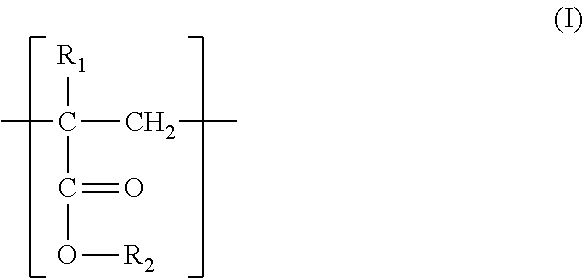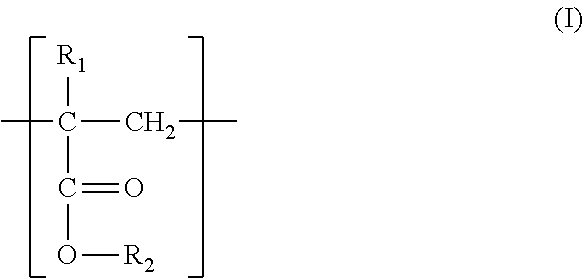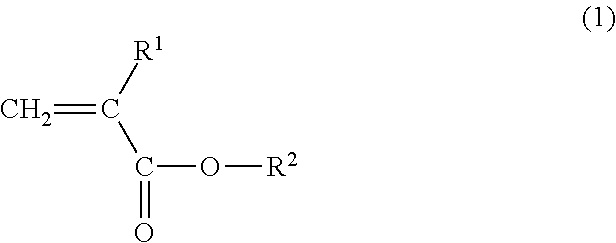Lubricating oil composition
a technology of lubricating oil and composition, which is applied in the direction of lubricant composition, liquid carbonaceous fuel, fuel, etc., can solve the problems of significant shortened life, malfunctioning transmissions, and fatigue life extremely shortened, and achieve energy saving properties and high efficiency, excellent thermal/oxidation stability, and low traction coefficient
- Summary
- Abstract
- Description
- Claims
- Application Information
AI Technical Summary
Benefits of technology
Problems solved by technology
Method used
Image
Examples
examples
[0081]Hereinafter, the present invention will be described in more details by way of the following examples and comparative examples, which should not be construed as limiting the scope of the invention.
examples 1 and 2
, Comparative Examples 1 to 5
[0082]Lubricating oil compositions according to the present invention (Examples 1 and 2) were prepared in accordance with the formulations set forth in Table 1 below. The traction coefficient of each composition was measured and the results are also set forth in Table 1.
[0083]Lubricating oil compositions for comparison (Comparative Examples 1 to 5) were prepared in accordance with the formulations set forth in Table 1 below. The traction coefficient of each composition was measured and the results are also set forth in Table 1.
[0084][Measurement of Traction Coefficient]
[0085]Traction coefficient was measured under the following conditions using a film EHL tester*.
[0086](*) described in Tribology International (March 2007) by R. Kapadia et al.
[0087](Test Conditions)[0088]Test piece: SUJ2[0089]Oil temperature: 100° C.[0090]Surface pressure: 0.514 GPa[0091]Slip ratio: 100%
[0092]As set forth in Table 1, the compositions each comprising a partial ester of a p...
PUM
| Property | Measurement | Unit |
|---|---|---|
| Temperature | aaaaa | aaaaa |
| Temperature | aaaaa | aaaaa |
| Percent by mass | aaaaa | aaaaa |
Abstract
Description
Claims
Application Information
 Login to View More
Login to View More - R&D
- Intellectual Property
- Life Sciences
- Materials
- Tech Scout
- Unparalleled Data Quality
- Higher Quality Content
- 60% Fewer Hallucinations
Browse by: Latest US Patents, China's latest patents, Technical Efficacy Thesaurus, Application Domain, Technology Topic, Popular Technical Reports.
© 2025 PatSnap. All rights reserved.Legal|Privacy policy|Modern Slavery Act Transparency Statement|Sitemap|About US| Contact US: help@patsnap.com



